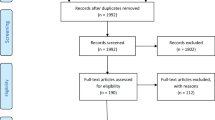Abstract
Introduction
The evolution of the field of neurological surgery has been marked by a progressive minimalism. This has been evident in the development of an entire arsenal of modern neurosurgical enterprises, including microneurosurgery, neuroendoscopy, stereotactic neurosurgery, endovascular techniques, radiosurgical systems, intraoperative and navigational devices, and in the last decade, cellular and molecular adjuvants.
Aims
In addition to reviewing the major developments and paradigm shifts in the cyclic reinvention of the field as it currently stands, this paper attempts to identify forces and developments that are likely to fuel the irresistible escalation of minimalism into the future. These forces include discoveries in computational science, imaging, molecular science, biomedical engineering, and information processing as they relate to the theme of minimalism.
Discussion
These areas are explained in the light of future possibilities offered by the emerging field of nanotechnology with molecular engineering.






Similar content being viewed by others
References
Adler JR, Murphy MJ, Chang SD, Hancock SL (1999) Image-guided robotic radiosurgery. Neurosurgery 44:1299–1306
Amar AP, Zlokovic BV, Apuzzo MLJ (2003) Endovascular restorative neurosurgery: a novel concept for molecular and cellular therapy of the nervous system. Neurosurgery 52:402–412
Apuzzo MLJ (2000) Modernity and the emerging futurism in neurosurgery tempora mutantur nos et mutamur in illis. J Clin Neurosci 7:85–87
Apuzzo MLJ (2001) Cellular and molecular neurosurgery: fetal grafting to treat Parkinson’s disease. Neurosurgery 49:575–575
Apuzzo MLJ, Liu CY (2001) Things to come. Neurosurgery 49:765–778
Apuzzo MLJ, Liu CY (2002) Honored guest presentation: quid novi? In the realm of ideas—the neurosurgical dialectic. Clin Neurosurg 49:159–187
Apuzzo MLJ, Liu CY, Sullivan D, Faccio RA (2002) Honored guest presentation: surgery of the human cerebrum—a collective modernity. Clin Neurosurg 49:27–89
Bennett CH, DiVincenzo DP (2000) Quantum information and computation. Nature 404:247–255
Betzig E, Trautman JK, Harris TD, Weiner JS, Kostelak RL (1991) Breaking the diffraction barrier-optical microscopy on a nanometric scale. Science 251:1468–1470
Crommie MF, Lutz CP, Eigler DM (1993) Confinement of electrons to quantum corrals on a metal-surface. Science 262:218–220
Frietas RA Jr (1999) Nanomedicine: basic capabilities, vol 1. Landes Bioscience, Austin
Hadani M, Spiegelman R, Feldman Z, Berkenstadt H, Ram Z (2001) Novel, compact, intraoperative magnetic resonance imaging-guided system for conventional neurosurgical operating rooms. Neurosurgery 48:799–807
Hopkins LN, Lanzino G, Guterman LR (2001) Treating complex nervous system vascular disorders through a “needle stick”: origins, evolution, and future of neuroendovascular therapy. Neurosurgery 48:463–475
Liu CY, Apuzzo MLJ (2003) The genesis of neurosurgery and the evolution of the neurosurgical operative environment. I. Prehistory to 2003. Neurosurgery 52:3–19
Liu CY, Apuzzo MLJ, Tirrell DA (2003) Engineering of the extracellular matrix: working toward neural stem cell programming and neurorestoration—concept and progress report. Neurosurgery 52:1154–1165
Liu CY, Spicer M, Apuzzo MLJ (2003) The genesis of neurosurgery and the evolution of the neurosurgical operative environment. II. Concepts for future development, 2003 and beyond. Neurosurgery 52:20–33
Reed MA, Tour JM (2000) Computing with molecules. Sci Am 282:86–93
Roy S, Ferrara LA, Fleischman AJ, Benzel EC (2001) Microelectromechanical systems and neurosurgery: a new era in a new millennium. Neurosurgery 49:779–797
Rutka JT, Taylor M, Mainprize T, Langlois A, Ivanchuk S, Mondal S, Dirks P (2000) Molecular biology and neurosurgery in the third millennium. Neurosurgery 46:1034–1051
Soong RK, Bachand GD, Neves HP, Olkhovets AG, Craighead HG, Montemagno CD (2000) Powering an inorganic nanodevice with a biomolecular motor. Science 290:1555–1558
Spicer MA, Apuzzo MLJ (2003) Virtual reality surgery: neurosurgery and the contemporary landscape. Neurosurgery 52:489–496
Various (2001) Human genome issue. Science 291:1145–1434
Various (2001) Human genome issue. Nature 409:813–960
Various (2000) Issues in nanotechnology. Science 290:1523–1545
Zlokovic BV, Apuzzo MLJ (1997) Cellular and molecular neurosurgery: pathways from concept to reality. I. Target disorders and concept approaches to gene therapy of the central nervous system. Neurosurgery 40:789–803
Zlokovic BV, Apuzzo MLJ (1997) Cellular and molecular neurosurgery: pathways from concept to reality. II. Vector systems and delivery methodologies for gene therapy of the central nervous system. Neurosurgery 40:805–812
Zlokovic BV, Apuzzo MLJ (1998) Strategies to circumvent vascular barriers of the central nervous system. Neurosurgery 43:877–878
Author information
Authors and Affiliations
Corresponding author
Rights and permissions
About this article
Cite this article
Liu, C.Y., Wang, M.Y. & Apuzzo, M.L.J. The evolution and future of minimalism in neurological surgery. Childs Nerv Syst 20, 783–789 (2004). https://doi.org/10.1007/s00381-004-0931-5
Received:
Published:
Issue Date:
DOI: https://doi.org/10.1007/s00381-004-0931-5




